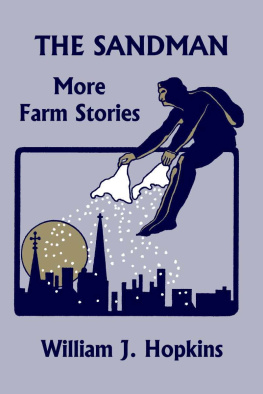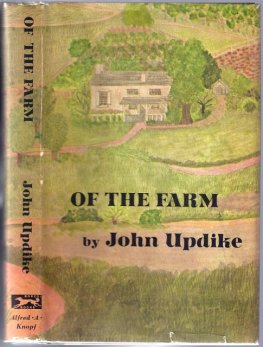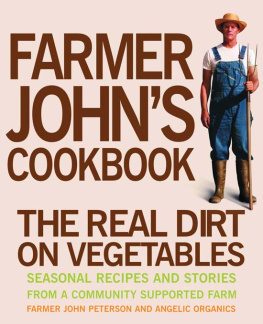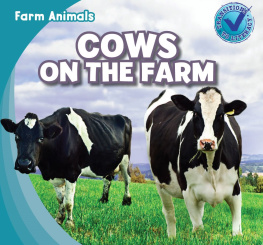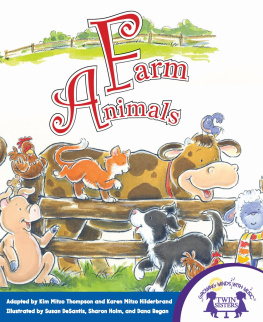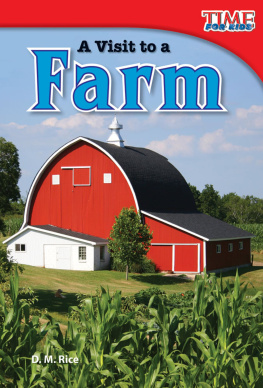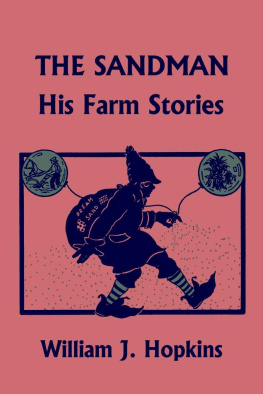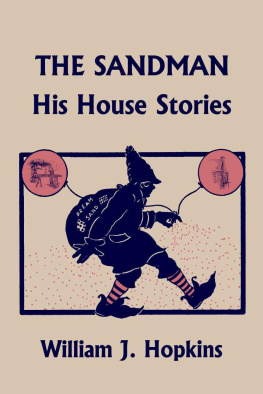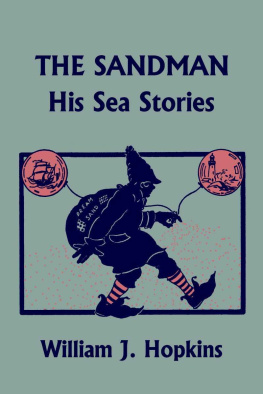The Sandman: More Farm Stories
by
William J. Hopkins
Yesterday's Classics
Chapel Hill, North Carolina
Cover and Arrangement 2010 Yesterday's Classics, LLC
All rights reserved. No part of this book may be reproduced or retransmitted in any form or by any means without the written permission of the publisher.
This edition, first published in 2010 by Yesterday's Classics, an imprint of Yesterday's Classics, LLC, is an unabridged republication of the work originally published by L. C. Page & Company in 1903. This title is available in a print edition (ISBN 978-1-59915-301-8).
Yesterday's Classics, LLC
PO Box 3418
Chapel Hill, NC 27515
Yesterday's Classics
Yesterday's Classics republishes classic books for children from the golden age of children's literature, the era from 1880 to 1920. Many of our titles are offered in high-quality paperback editions, with text cast in modern easy-to-read type for today's readers. The illustrations from the original volumes are included except in those few cases where the quality of the original images is too low to make their reproduction feasible. Unless specified otherwise, color illustrations in the original volumes are rendered in black and white in our print editions.
Contents
The Calf Story
O NCE upon a time there was a farm-house, and it was painted white and had green blinds; and it stood not far from the road. In the fence was a wide gate, to let the wagons through to the barn. And the wagons, going through, had made a little track that led up past the kitchen door and past the shed and past the barn and past the orchard to the wheat-field.
In that farm-house lived Uncle Solomon and Uncle John; and little Charles and little John and their mother Aunt Deborah; and little Sam and his mother Aunt Phyllis. Uncle Solomon was Uncle John's father, and Uncle John was the father of little Charles and little John. And little Sam was Uncle Solomon's little boy.
One day in the summer, little Charles and little John were playing about not far from the kitchen door, and Uncle Solomon came along. He said, "Boys, I wish you would go to the barn and let the calf out into the cow-yard." So the little boys thought that would be fun, and they ran along past the shed, and up the place where the wagons went into the barn. And they both pushed hard on one of the big doors, and it slid back a little way, and they went in.
At one side of the barn, next to the cows' place, was a kind of pen. It had a fence of boards all around it, about as high as little John's head; and in one side of the fence was a gate. This pen was to put a horse or a cow or a calf in, and any horse or cow or calf that was in it wasn't tied at all, but was just loose, so it could walk around any way it wanted to. So they called the pen a loose-box, or a box stall; and it was about as big as a boy's little room that he sleeps in.
When the little boys went into the barn, a calf was in the loose-box, and they had to let the calf out into the cow-yard. So they opened the gate at the top of the sloping place that led down to the cow-yard, and then they opened the gate to the loose-box, and they saw the calf. It was just standing still, looking at them, with its big ears out straight. Little Charles called to the calf, and it came a very little way nearer, but it wouldn't come out and it wouldn't come near enough for little Charles to touch it. So he went into the loose-box to catch the calf, and little John stood by the gate.

When little Charles went into the loose-box, the calf gave a jump over to the other side, and then it made another big jump and ran past little Charles, and out the gate of the loose-box, and knocked little John down. Then it ran out the gate to the sloping place, and down the sloping place to the cow-yard. Little John got up and laughed, for he wasn't hurt, and little Charles came out of the loose-box, and they both went to the doorway of the sloping place and looked down, and there was the calf standing by the wall, looking up at them.
So, while the little boys stood there, looking at the calf, little John thought of something. And he said, "Charles, I bet you can't ride that calf." And little Charles said, "I bet I can."
So little Charles went down into the cow-yard to ride the calf. And the calf waited by the wall until little Charles got pretty near, but not near enough to catch it, and then it made a big jump and kicked up its heels and went running past little Charles over to the other side of the cow-yard. And little Charles went over to that side to catch it, but it jumped past him again; and so he tried for a long time to catch the calf, and chased it back and forth across the cow-yard, but he couldn't catch it.
At last the calf was in the corner of the cow-yard, and it waited a little too long, so that when it tried to jump past little Charles, he caught it by the tail and jumped up on its back. But he had to hurry so, to get on, that he got on the wrong way around, with his face toward the calf's tail, and he was holding on to the calf's tail with both hands.
The calf didn't like to feel a boy on its back, and it jumped about and kicked up its heels and ran all about the cow-yard. And little Charles didn't dare to let go the calf's tail, because he was afraid he would fall off and hurt himself, the calf was jumping so hard. And he couldn't turn around with his face the right way, because he didn't dare to let go the tail. So the calf ran all around the cow-yard, with little Charles on its back holding to its tail with both hands, and the calf jumped and kicked, trying to throw little Charles off, but he held on tight. And little John stood in the doorway of the sloping place, and he thought it was a good joke and he laughed very hard. But little Charles didn't laugh. He wanted to get off the calf's back, but he didn't dare to, while the calf was jumping about so hard, and the calf wouldn't stop. So at last he called to little John and told him he must go and call Uncle Solomon.
THE CALF JUMPED AND KICKED
Then little John ran off as hard as he could, and he found Uncle Solomon and told him that little Charles wanted to get off the calf but he couldn't. And Uncle Solomon didn't know what he meant, but he went with little John to the barn, and stood in the doorway to the sloping place, and saw the calf jumping about with little Charles riding backwards and holding to its tail. He couldn't help laughing at first, but then he went down into the cow-yard and caught the calf, and little Charles got off. And Uncle Solomon told both the little boys that they must not ride on the backs of young animals, because young animals were not strong enough, and their bones weren't hard, and it might hurt them very much. So the little boys said they wouldn't do it again. Little Charles didn't want to, anyway.
Then Uncle Solomon went back, out the cow-yard gate, past the barn, to the garden, where he was working. And the little boys went back and played by the shed.
And that's all.
The Hatchet Story
O NCE upon a time there was a farm-house, and it was painted white and had green blinds; and it stood not far from the road. In the fence was a wide gate to let the wagons through to the barn. And the wagons, going through, had made a little track that led up past the kitchen door and past the shed and past the barn and past the orchard to the wheat-field.

